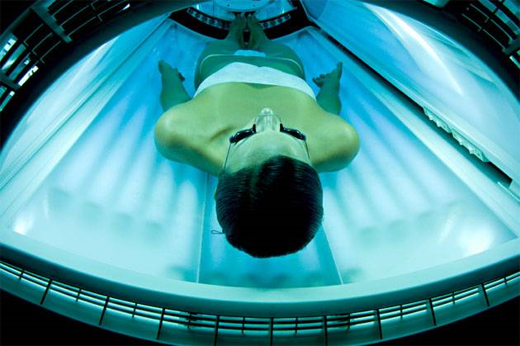Tanning Beds a Top Cancer Risk Along with Arsenic, Mustard Gas

Experts in the cancer branch of the World Health Organization have now moved tanning beds and other forms of ultraviolet radiation into the top cancer risk group along with arsenic, mustard gas, smoking cigarettes and chimney sweeping, among others.
Tanning beds have long been considered “probable carcinogens” likely to lead to skin cancer by the WHO, but this news, published in the medical journal Lancet Oncology, concludes through the analysis of about 20 different cancer studies that skin cancer risk increases by 75% in people who start using tanning beds before the age of 30.
“People need to be reminded of the risks of sunbeds,” remarked Vincent Cogliano, one of the researchers. “We hope the prevailing culture will change so teens don’t think they need to use sunbeds to get a tan.”
Studies show that the use of tanning beds has increased in the under-30 generation, including teens. This is easy to believe due to high visibility of bronzed celebrities gracing our movie theaters and television screens (see our previous post on Tanorexia and UV protection).
Cogliano went on to elaborate that ultraviolet radiation is not healthy in any form, whether it be from a tanning bed or even the sun. This research only further emphasizes the need for us all to limit sun exposure and to always protect our skin by wearing sunscreen or sunblock daily with an SPF of at least 30. In addition to the cosmetic problems such as hyperpigmentation and wrinkles that prolonged sun exposure can cause, it has now been confirmed what a serious health risk tanning can be.
As an alternative to tanning, the American Cancer Society recommends cosmetic bronzers and self-tanners as an alternative to tanning beds. Let’s all remember to protect our skin this summer!
More information about this story at USAToday.com.
